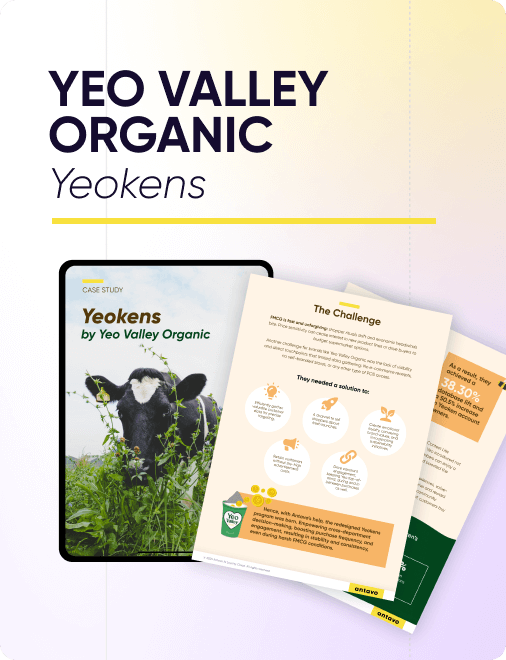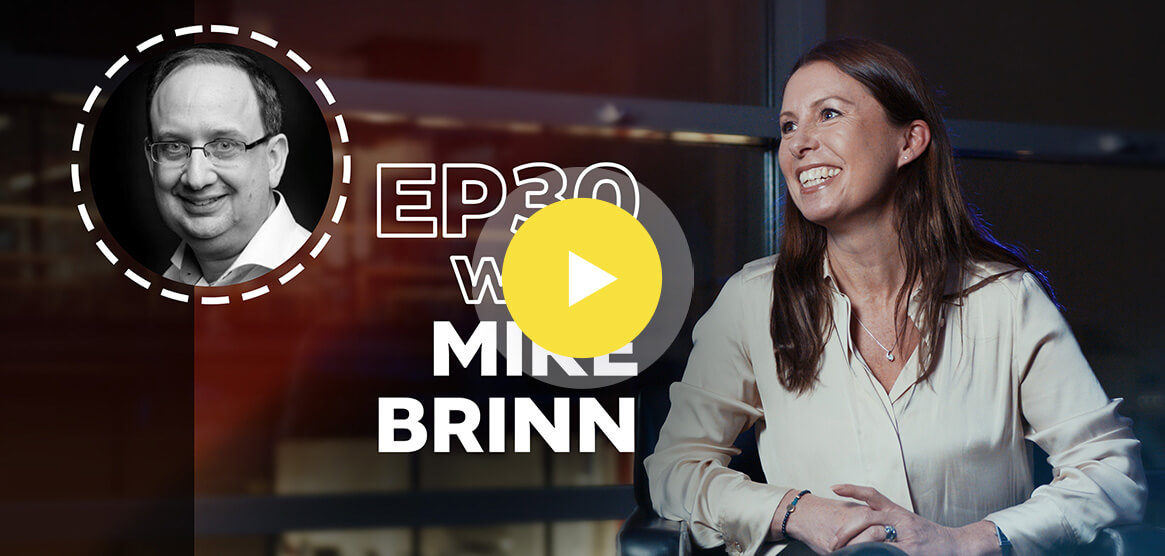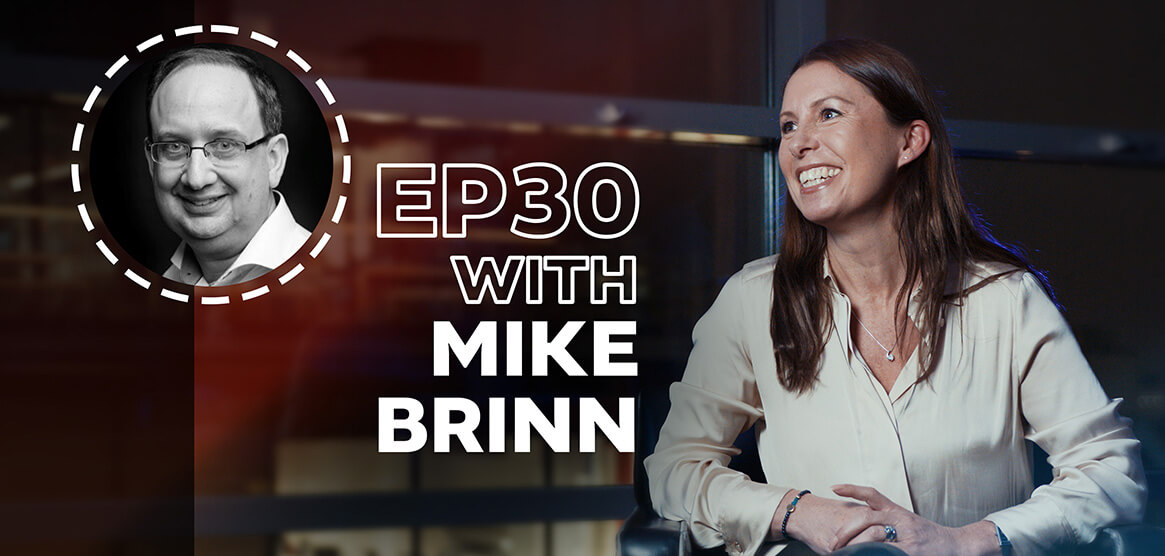Our guest for this episode of the Loyalty Stories podcast is Mike Brinn, MD Ireland and Global Loyalty Director at TLC Worldwide.
The interview for this podcast has been a valuable source for Antavo’s Global Customer Loyalty Report 2024. Make sure to download it for over 30 statistics on loyalty program trends.
In this episode, we explore the evolution of loyalty programs and some of Mike Brinn’s standout projects that focus on emotional engagement and immersive customer experiences. We also discuss the shift from traditional points-based systems to innovative programs that build deeper connections with customers, as well as the growing emphasis on sustainability and ROI.
Highlights from our conversation with Mike:
- His favorite loyalty program
- The shift from traditional point-based programs
- Possible trends in the loyalty industry in the future
- Advice he would give for aspiring loyalty professionals
Learn more:
- LinkedIn profile of Mike Brinn
- TLC Worldwide
- Read about Sustainability in loyalty programs
- Book a demo with Antavo’s loyalty experts
Michelle
Hi and welcome to Loyalty Stories, and Antavo’s podcast on customer loyalty and loyalty programs. I’m Michelle Ellicott-Taylor and I’m Head of Global Partnerships at Antavo. And we’re a technology vendor that powers loyalty programs all over the world. We work with some really exciting brands and businesses, including fashion companies, retailers, food and beverage, with some great brands, including KFC.
In this podcast, loyalty series and Loyalty Stories, we dive into the trends around customer loyalty and loyalty programs. We talk with industry experts around the world to pick their brains and to learn what’s important and what’s coming next in loyalty programs. So today I’m really excited to have Mike Brinn join us. Hi Mike.
Mike
Hi Michelle, how are you?
Michelle
I’m very well, thank you. And I’m just going to give you a bit of an introduction, Mike. I know you’re a great expert in loyalty, but Mike’s actually MD and global loyalty director at TLC worldwide.
And Mike’s working with brands to enhance customer engagement, brand value, customer experience, et cetera, across their loyalty programs with exciting rewards. So, I think I’ve covered a bit of what you do there, Mike, but if there’s anything else you’d like to add and give us a bit of a background on you, that’d be really great.
Mike
Thank you so much. I’m just genuinely passionate about this area. I’ve been working in loyalty for probably close to 20 years. Worked across all verticals from insurance to retail to gaming to sports, whatever it is because the principles are always the same. It’s just exciting to have these conversations. So looking forward to our chat.
Michelle
Yeah, yeah, so am I, and especially because you’ve got all that experience across all sorts of different verticals. So it’s always good to kind of start these sessions with finding out, you know, what’s important to you, what’s worked in loyalty, and it’s a great way to get to know someone as well. So can you share with us what your favorite loyalty programme is and why?
Mike
Favorite ones I’ve worked on are just in general from the public–the main.
Michelle
Well, you know what, there’s two angles to this, I think, one just in general, and then it’d be really exciting if you can share one that is one that you’ve actually worked on too. And to be honest, it doesn’t have to be limited to that. It might be there’s two you really like and two that you’ve actually worked on.
Mike
Yeah, I think what I’m excited about recently is the development of the Lego program. So that’s not one we have worked on, because Lego program was very much a VIP program. That was the way it positioned itself. And now it’s moved to Lego Insiders. And what’s really exciting about that is it’s using technology to have a one place where you can sign into and get everything together.
So you can see what, in the program, they had their VIP for loyalty; they have a community now connected to it. There is family activities, in-store events, all those things come together into one program. I think that’s a really exciting movement for them because it really gets to that node where you want to be with loyalty, that it’s a place, it’s a pillar, it connects everything together that’s part of your customer connection. It’s a points-based program.
I’m more a fan of non-points based programs, to be honest, but that’s one that I think this just August recently that has been changed. But there’s plenty of great examples of programs out there. And it’s the ones that do content and rewards very well that excite me. As far as ourselves, one of my probably my favorite programs of this year, and it was shortlisted for the International Audit Awards, as we worked with Coral, the racing company, the car brand, and a part of Entain.
And they wanted to create a loyalty program for their customers. And if you looked at their proposition, it was around getting closer to the action. So you bet on the horse, but you’re a horse fan. You’re an enthusiast. You like horses. That’s why you’re in this, you’re participating in betting on the horses, but you look at all the form guides, you look at everything else.
And within that program, the idea was, and Coral will take much of the credit for this much of the credit for this, of course.
is that they purchased five horses and you could see all the content around those horses being trained, the owners of those horses. And when the horse ran in a race, you actually were the owner for the day. And you became the person that came to the track.
You took the winnings home. You went into the winning enclosure. So you’ve got a real experience and that, for me, is loyalty because you see that kind of commitment from a brand to its customers, that they know that’s what they want to do in life.
They are passionate about their product that they have. This product is horse racing. And all these people ever wanted to do was be part of that industry. So they’ve met that opportunity to come to life with them. So they’re kind of two of the most recent ones that, kind of, I’m fond of.
Michelle
Yeah, I like what you said there about the, I guess, the racing one, because it’s allowing someone to feel like they’re really part of, it’s that immersiveness of it as well, isn’t it? It’s not just looking at a points-based system, but making someone feel, yeah, part of what that end-brand experience is like.
Mike
Yeah, and there wasn’t a single point to be collected. This was just an engagement program. And that’s what loyalty needs to be. It needs to be an emotional response that you get. You feel that connection with the brand. And that’s what that brings across when you allow people to be owners for the day in that example.
Michelle
Yeah, yeah, definitely. So I guess with that in mind, thinking about changes that have happened over the last few years in loyalty in the industry, what would you say, maybe one or two key changes that you have seen with how the loyalty programs are running and is it linked to maybe what you’ve touched on there, a non-points based system and more about the rewards? But I don’t want to lead you on your answer, you know.
Mike
Yeah, no, no. I think it’s a really good question because I think if you look back over time, people were very focused on transactional based logic. So you do this, you get that. And I think it was Capgemini who had a really interesting survey where they said 79% of programs that were based on transactional only failed after two years.
Failed may not be that closed down, it just may not have reached their KPIs. So people then started realizing you had to bring in this non-transactional element.
Michelle
Yeah.
Mike
And that started creating that emotional connection between you and the brand because you were watching content, you’re reading articles, you’re playing games, you’re doing some surveys to share some information and brands will share something back to you. So if you have a brand that has, you know, an authentic story to tell.
It’s got plenty of data and it has, you know, can give a positive engagement to your brand. I think that’s really exciting because that’s when you can do emotional loyalty and that comes in different guises. But that’s, I think, the biggest trend I’m seeing is moving away from transaction to non-transaction, making sure you’re making your brand top of mind through making emotional connections with your customers.
Michelle
Okay, and then that, I guess that leads into like you’ve mentioned there about trends coming forward. So there’s obviously been those changes that you’re mentioning there and with the next, I don’t know, like 12, 24 months, what do you think will be the key, like new trends that we will see in the loyalty industry?
Mike
I think one of them is, I think every conversation we have today talks about ROI. So I think return on investment, is that a trend? I think it’s important to our customers we speak to.
Michelle
Yeah.
Mike
So I think one of the things that you’re seeing today is that brands are really looking at, am I getting a return on investment? Am I just rewarding everybody? Or am I making changes in behavior? So I think there’s a real trend in trying to understand the program. That’s not meaning that people will spend less on their logic programs.
They actually want to enhance their spending and they want to spend more, but they don’t want to have programs where they can see the return on them. And then they’re just rewarding everybody. You can see in brands like Costa have gone from 8 to 10 coffees now to get free coffee. You know, some brands are starting to see their value proposition. Should they be increasing it? Should they be decreasing it? So I think that’s one trend.
Another one is just building that connection. You know, I think you have to make customers feel like you understand them. You’re making them feel special. You care about them. You care about the environment. You can hear about the world. So I think, you know, they have to bring in that storytelling into the programs. They’re a key message that has to be brought toő.
Michelle
Yeah, I think you’ve touched on that. It makes me think about, say, sustainability and things like that with the environment. What are brands doing to, I guess, show their greener side? As well as there’s obviously that encouragement of another purchase with a brand, but what are they giving back at the same time?
Mike
Yeah, and I think that’s really important because, you know, going back over time, I was always doing programs with a charity element in it.
Michelle
Okay.
Mike
And the charity element was you could burn your points if it was a points best program and donate them to charities. You never really saw the uptake in that.
Michelle
Yeah.
Mike
But what we have seen with brands we’ve worked on where we’ve done things like refer a friend and we plant a tree on your behalf.
Michelle
Yeah.
Mike Brinn
That’s something people want to do when we give people content about how to be more sustainable through the program, because as a brand, we have a message we want to put true to the customers. We’re a storyteller as a brand. So the program should be your storydoer. It should be bringing all that to life. So I think you’re seeing that trend coming into loyalty. The content element is becoming very important because it keeps you top of mind and keeps customers engaged, not just about how much they spend.
Michelle
Yeah, exactly. It’s that wider, I guess, relationship with the customer and the brand, isn’t it? Like that value exchange. Not just the make the next purchase. Although that’s something everyone is aiming for. But Ok. And then with, I guess, thinking about how those trends evolve and how you, you know, in that same marketing consultancy space are talking with brands about what they should be doing. How front of mind is it with, like, the main features of the platform?
Someone’s working with what you are considering and having conversation with the brands. So are people, you, as a consultant or the end brands, are you thinking about how something is easy to integrate, implementation, ease of use, how customizable a platform is, omni-channel, all these different things when people are actually looking at what they want to use to deliver with. What’s, yeah, what are the key messages there?
Mike
Yeah, I think it’s one of the challenges has been making sure you work with a good partner as well. So from that perspective is, you know, you create strategies, but you need to make sure they can be implemented. So you need to find a partner that can do that. And that is around all those elements. Gamification, getting third party data. We know the challenge with cookies now.
Michelle
Yeah.
Mike
And customers expect that, our members expect that. If we have, if they’ve told us something, they want us to be able to, you know, give back the personalized direct contact or whatever it may be that you have as an offering. And if your technology platform isn’t simple to use, I think the CX of your platform is so critical because you’re relying on people to use this, to be able to integrate easy, to be able to send the messages at the right time and, and going back over time, I think that’s where programs failed.
People just invested in tech, big tech, but never really knew how to use it. And it didn’t have that experience level to it that was easy to jump in and out of it. So I think that’s such an important part when we’re looking at helping our customers pick the right tech providers.
Michelle
Yeah, that ease of use is really important for them. So you’ve got to think about the time and resource they’ve got to be putting into this as well to actually deliver on the campaign. So, okay. And then from an assignment perspective, so I guess linking it again with what we were just saying there with you giving advice and strategy and consultancy, who is it that you’re finding is leading these assignments? So does it still come from your head of loyalty? Is it CMO?
Or are you seeing other executive level members getting involved with these assignments?
Mike
Yeah, I think when I look back over my history in loyalty, we would always have talked to the tech person first.
Michelle
Okay.
Mike
Because if we can’t, and this is I think brands, companies like Antavo really help and change the industry because it’s an easier integration. So in the past, it was a very big integration that needed to be done. You needed to invest a lot of time and energy in it. So you left it to the tech people to talk to first.
And now what you’re seeing is the marketing people, they have the ideas, they understand what their customer segments are, they understand what their customers needs. They understand, I think, the principle that you need to be loyal to your customers and not expect them to be loyal to you all the time. So they’re looking for those kinds of solutions.
And that’s where I think a lot of us coming from CMOs, they’re really directing what the program should be. And I think what we’re driving and building strategies and engagement techniques around it were very heavily influenced by their thoughts. And I think there’s an ambition for most brands that are doing this well to create your program as a pillar for the brand. So it’s something that stands out. It’s not just a discount scheme dressed up as a loyalty program. So I think that’s a really critical thing to do.
Michelle
Yeah, yeah, and do you see then that different teams are working together now for achieving this wider picture on the naughty programme rather than it being siloed within one team?
Mike
Yeah, and you know, something I’ve learned over the years, when you look at it, if you don’t get your strategy right, your creative right, your tech right, and your rewards right, so your value exchange basically at the end, you do not get a proposition that a customer will understand and get and engage with. If one of those elements are missing, so if the technology wasn’t right, the customer would have a bad experience.
If the strategy wasn’t right, they wouldn’t understand why they’re in the program. If the rewards weren’t right, they wouldn’t get the value. And if the creative wasn’t right, it just wouldn’t make sense. So I think it’s a cross functional team today. And everybody has to be at the table and everyone has to be offering their opinion. And also it’s, it’s as much an art as it is science. So I think everyone’s ideas is very valuable, no matter what part of it, a company you work in.
Michelle
Yeah, and that leads nicely into me wanting to ask you with a bit of advice that you can maybe give. So thinking about you being, I say, nearly 20 years with experience here. If there’s someone that’s starting out in loyalty, like a junior loyalty manager, and they are looking to, you know, aspire to be head of that team or director of loyalty within the brand.
What are the kind of things that you think someone should be thinking about with, you know, how they’re running the loyalty concept internally? What’s the advice you would give to somebody who’s in their early 20s looking to make it in loyalty?
Mike
I smile because my 16 year old daughter is actually going to go and work experience in our company. And I’m having that conversation. She’s not 25 thankfully yet. But I think one thing I think as I speak to her and talk about this kind of piece is just have empathy. Just really try and understand who the customer is because no two programs should be the same. And it’s really about spending time understanding what is that customer’s needs state.
What is it that they need to achieve? What would make them loyal? What is it that the brand can really be credible about? And have they got the technology that makes this easy to implement? And don’t be afraid to stretch it because I’ll give you one example, just as an anecdote to bring this to life. I remember years ago, I was asked to do an insurance loyalty program, create one.
And when you think about that, most people don’t have any engagement with their insurance company, you get a renewal notice and that’s it. You know, if you don’t, 92% of people don’t make a claim. When we looked at insurance, we said, okay, you sell insurance, but you can sell protection.
So if your loyalty program has lots of content around protection and is really interested in helping customers, giving them advice on how to change your smoke alarm and doing things like that, then you become relevant and valuable. So always look at what your brand has that can make it relevant to the customers, how can you make their lives easier and get that value exchange right and the technology solution right, and then it could work. Not sure if that’s the answer to the question, but that’s something I look forward to.
Michelle
Yeah, no, that’s great. I love that you’ve actually got this going on in real life. So, you know, that’s great that it’s a very recent conversation for you. And I guess, you know, things that you were suggesting there and you mentioned about no two programs being the same. So with your experience on working with brands, obviously, you get to work with international brands and you might get the experience of, I say, different regions working in different ways with loyalty.
So do you have any, I guess, insights or advice on that? Like if, for instance, you’re an international brand, something works in Western Europe that doesn’t work in APAC, for instance, like do you see commonalities or regional differences?
Mike
I think the need states are the same. It’s the technology challenges that come across regions. You know, some brands, some industries, some countries like Brazil we work in or places like South Africa may, you know, rely more on messaging rather than email. So I think it’s the deliverable of the message that sometimes is different. But I think the core thing is most people will logically join a program because I think there’s something in it for them.
So you have to get that proposition right. And then you will not keep them in a programme unless you emotionally connect them to it. So whether that’s true content or the rewards, I think it’s the same no matter where you are. But I think it’s just the technology implementation. Sometimes there’s a different level of acceptance of technology in different places and challenges around that. I think that’s, so you have to have a robust strategy that doesn’t get sidelined by that. And that’s the only challenge.
Michelle
Yeah, and understanding that one shoe doesn’t fit all sort of things. So, yeah, you’ve got to look at what works in that region. That’s great. That’s a wrap. Thank you very much, Mike, for joining us on Antavo Loyalty Stories today. We really appreciated your time on this.
Mike
It is a pleasure. Thank you. Speak soon.
Michelle
Thank you so much and thank you to all of you for either watching or listening to this and wherever you do see this, please, give us a like and come and visit antavo.com to hear more about how we can support you with your loyalty campaigns and I’m sure Mike would appreciate hearing from you at TLC if you’ve got any questions regarding loyalty consultancy and strategy. Thanks a lot, bye.










